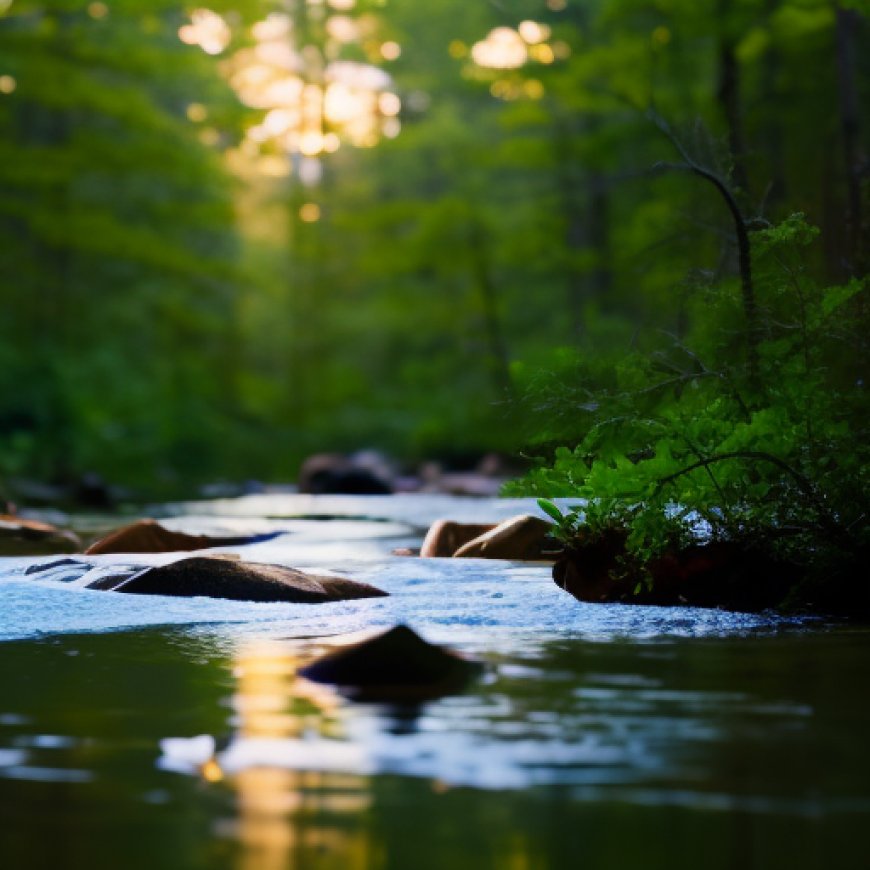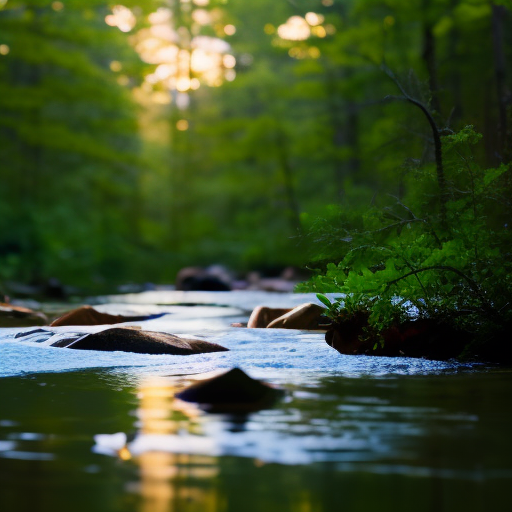In West Tennessee, Hatchie River group works to protect ecosystem amid development • Tennessee Lookout
In West Tennessee, Hatchie River group works to protect ecosystem amid development • Tennessee Lookout Tennessee Lookout


A Group Determined to Protect the Hatchie River Wetlands in West Tennessee
A group in West Tennessee is determined to protect one of “the crown jewels” of the region: the Hatchie River wetlands.
Raising Awareness about an Important Ecosystem
Led by former Partners in Flight Coordinator for the U.S. Fish and Wildlife Service and Haywood County resident Robert (Bob) Ford, the Hatchie River Conservancy (HRC) was formed in December to raise awareness about an important ecosystem in rural West Tennessee — an area of the state that is changing rapidly due to the construction of the Ford BlueOval City manufacturing campus and immense population growth.
While many West Tennesseans are excited about the opportunities for industrial and economic growth, others have concerns about the unintended consequences of rapid development across the area. Those concerns were the impetus for the formation of the conservancy.
“We often talk about the development and population growth in Haywood, and that turns to impacts on the Hatchie River,” Ford explained. “What if we had a citizen-led, non-profit group that made sure the Hatchie River was at the table for those discussions?”
The Importance of the Hatchie River
The Hatchie River is a 238-mile river flowing through six West Tennessee counties. Beginning in McNairy County, it winds its way west, emptying into the Mississippi River. The Hatchie is the longest free-flowing tributary of the lower Mississippi and home to the most extensive forested floodplain in Tennessee.
Change can be good; progress is good, but with progress comes growth in population. The cumulative impact of growth and people moving into the area could have unintended consequences for the Hatchie.
– Bob Ford, Hatchie River Conservancy
Threats to the Hatchie River
The Hatchie wetlands house nearly 250 species of birds, including birds passing through to Canada from Central and South America. It also hosts over 100 species of fish and 11 species of catfish, which is believed to be the highest number of catfish species in any river in North America.
Ford and other members of the conservancy believe that rapid change to the area could potentially be dangerous for an ecosystem that has gone untouched for thousands of years.
“In the Hatchie River watershed, things are changing. Change can be good; progress is good, but with progress comes growth in population,” Ford said. “The cumulative impact of growth and people moving into the area could have unintended consequences for the Hatchie.”
Legislative Developments and Conservation Efforts
In September 2021, Gov. Bill Lee visited Haywood County to announce the deal with Ford Motor Company for Blue Oval City. Since then, rural West Tennesseans have been planning for the expected growth.
As more people have moved to the area, new subdivision developments have been planned, and land purchased. The development of new neighborhoods and new homes could potentially increase the stormwater runoff from concrete and a changing landscape — both unintended negative consequences to the Hatchie River.
Recently, Rep. Kevin Vaughan, R-Collierville, introduced a bill that would limit state oversight of over more than 430,000 acres of Tennessee wetlands, including the Hatchie River ones.
Vaughan, owner and founder of Township Development Services in Collierville, believes the state needs to decrease its regulation of development due to the population growth West Tennessee is currently experiencing.
According to Ford, this kind of growth is precisely why the Hatchie River Conservancy was formed.
Conservancy’s Goals and Initiatives
Ford believes the most significant threats to the Hatchie are not intentional or premeditated; they are simply due to blind spots and a lack of awareness during development.
He also believes the biggest threats to the watershed wouldn’t necessarily be direct impacts on the ecosystem itself but simply the ramifications of rapid development — subdivisions squeezing up to the bluffs, concrete runoff, and trash in the river. Each has the potential to change the natural environment of the Hatchie.
Ford said his group wants to be a productive partner with the progress taking place in the area — a voice from a group of citizens who can share what they love about the Hatchie River as what they consider threats.
“I see the HRC as a large network of people using our site as a forum to share their love of the Hatchie and keep an eye on any negative impacts on the watershed,” he said. “We also want to provide technical assistance to landowners regarding forestry.”
“We’re partnering with the University of Tennessee Agricultural Center to increase forestry workshops for landowners. We want to sponsor research and science or provide support for ongoing studies in the watershed.”
Preserving the Cultural Impact
While the environmental impact of population growth in West Tennessee is a primary concern to the conservancy, the cultural impact on the Hatchie is also a priority worth protecting.
“People who have grown up around the Hatchie value this space for solitude. There are generational cabins along the river and a few boats and kayaks in the water,” Ford said. As the population grows, access to the river will grow, too.”
“Again, all of this would be unintentional, but would change what the Hatchie is and has been for generations of people.”
The Future of the Hatchie River Conservancy
Four months into its existence, the Hatchie River Conservancy is beginning to find
1. Which SDGs are addressed or connected to the issues highlighted in the article?
- SDG 6: Clean Water and Sanitation
- SDG 11: Sustainable Cities and Communities
- SDG 14: Life Below Water
- SDG 15: Life on Land
2. What specific targets under those SDGs can be identified based on the article’s content?
- SDG 6.6: By 2020, protect and restore water-related ecosystems, including mountains, forests, wetlands, rivers, aquifers, and lakes.
- SDG 11.4: Strengthen efforts to protect and safeguard the world’s cultural and natural heritage.
- SDG 14.1: By 2025, prevent and significantly reduce marine pollution of all kinds, particularly from land-based activities, including marine debris and nutrient pollution.
- SDG 15.1: By 2020, ensure the conservation, restoration, and sustainable use of terrestrial and inland freshwater ecosystems and their services.
3. Are there any indicators mentioned or implied in the article that can be used to measure progress towards the identified targets?
- Indicator for SDG 6.6: Conservation efforts for the Hatchie River wetlands and the prevention of unintended consequences of rapid development on water-related ecosystems.
- Indicator for SDG 11.4: Preservation of the cultural and natural heritage of the Hatchie River and its surrounding areas.
- Indicator for SDG 14.1: Reduction of pollution, such as stormwater runoff and trash, in the Hatchie River.
- Indicator for SDG 15.1: Conservation, restoration, and sustainable use of the Hatchie River wetlands and its associated ecosystem services.
4. SDGs, Targets, and Indicators
| SDGs | Targets | Indicators |
|---|---|---|
| SDG 6: Clean Water and Sanitation | 6.6: By 2020, protect and restore water-related ecosystems, including mountains, forests, wetlands, rivers, aquifers, and lakes. | Conservation efforts for the Hatchie River wetlands and the prevention of unintended consequences of rapid development on water-related ecosystems. |
| SDG 11: Sustainable Cities and Communities | 11.4: Strengthen efforts to protect and safeguard the world’s cultural and natural heritage. | Preservation of the cultural and natural heritage of the Hatchie River and its surrounding areas. |
| SDG 14: Life Below Water | 14.1: By 2025, prevent and significantly reduce marine pollution of all kinds, particularly from land-based activities, including marine debris and nutrient pollution. | Reduction of pollution, such as stormwater runoff and trash, in the Hatchie River. |
| SDG 15: Life on Land | 15.1: By 2020, ensure the conservation, restoration, and sustainable use of terrestrial and inland freshwater ecosystems and their services. | Conservation, restoration, and sustainable use of the Hatchie River wetlands and its associated ecosystem services. |
Behold! This splendid article springs forth from the wellspring of knowledge, shaped by a wondrous proprietary AI technology that delved into a vast ocean of data, illuminating the path towards the Sustainable Development Goals. Remember that all rights are reserved by SDG Investors LLC, empowering us to champion progress together.
Source: tennesseelookout.com

Join us, as fellow seekers of change, on a transformative journey at https://sdgtalks.ai/welcome, where you can become a member and actively contribute to shaping a brighter future.







